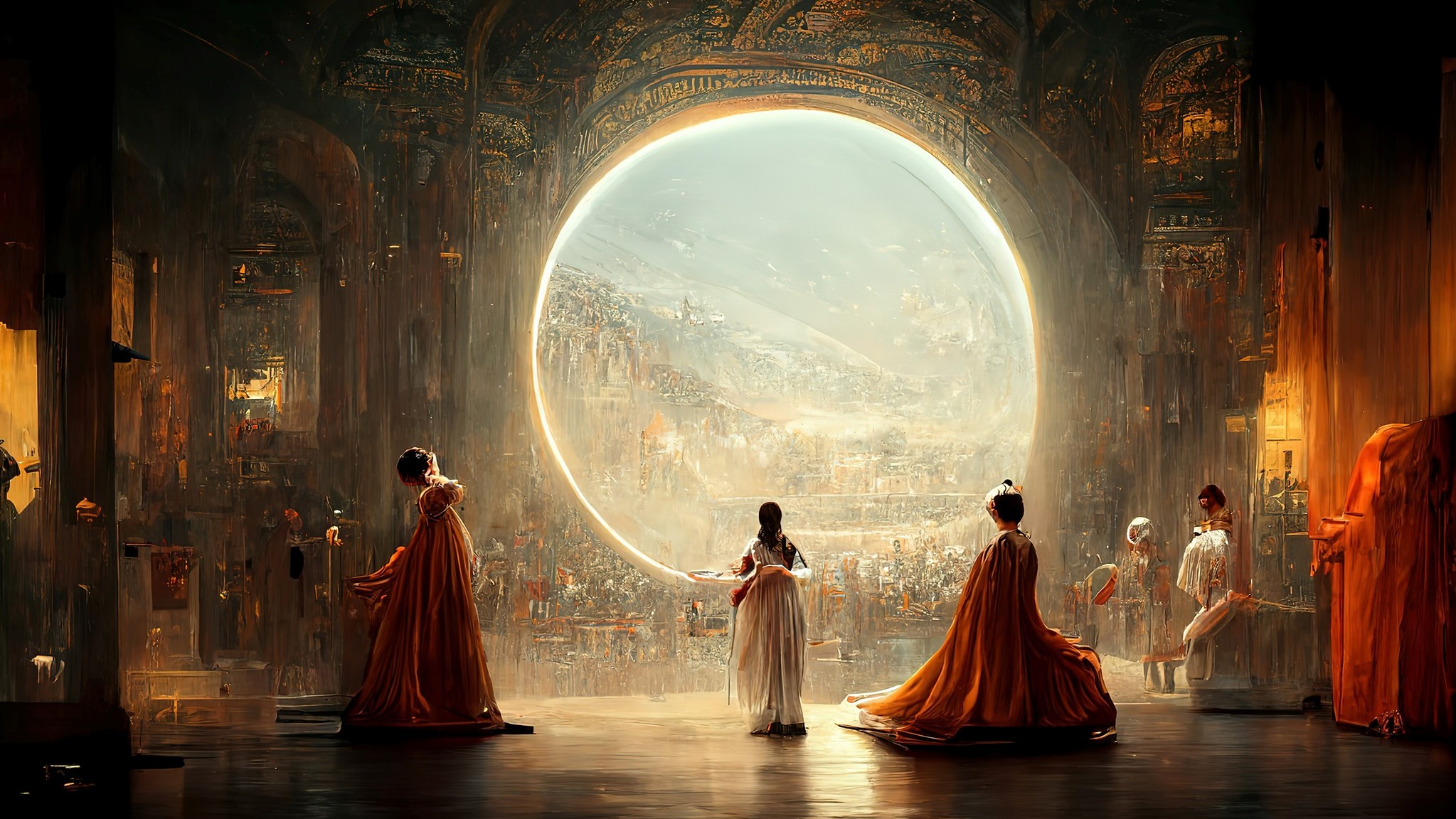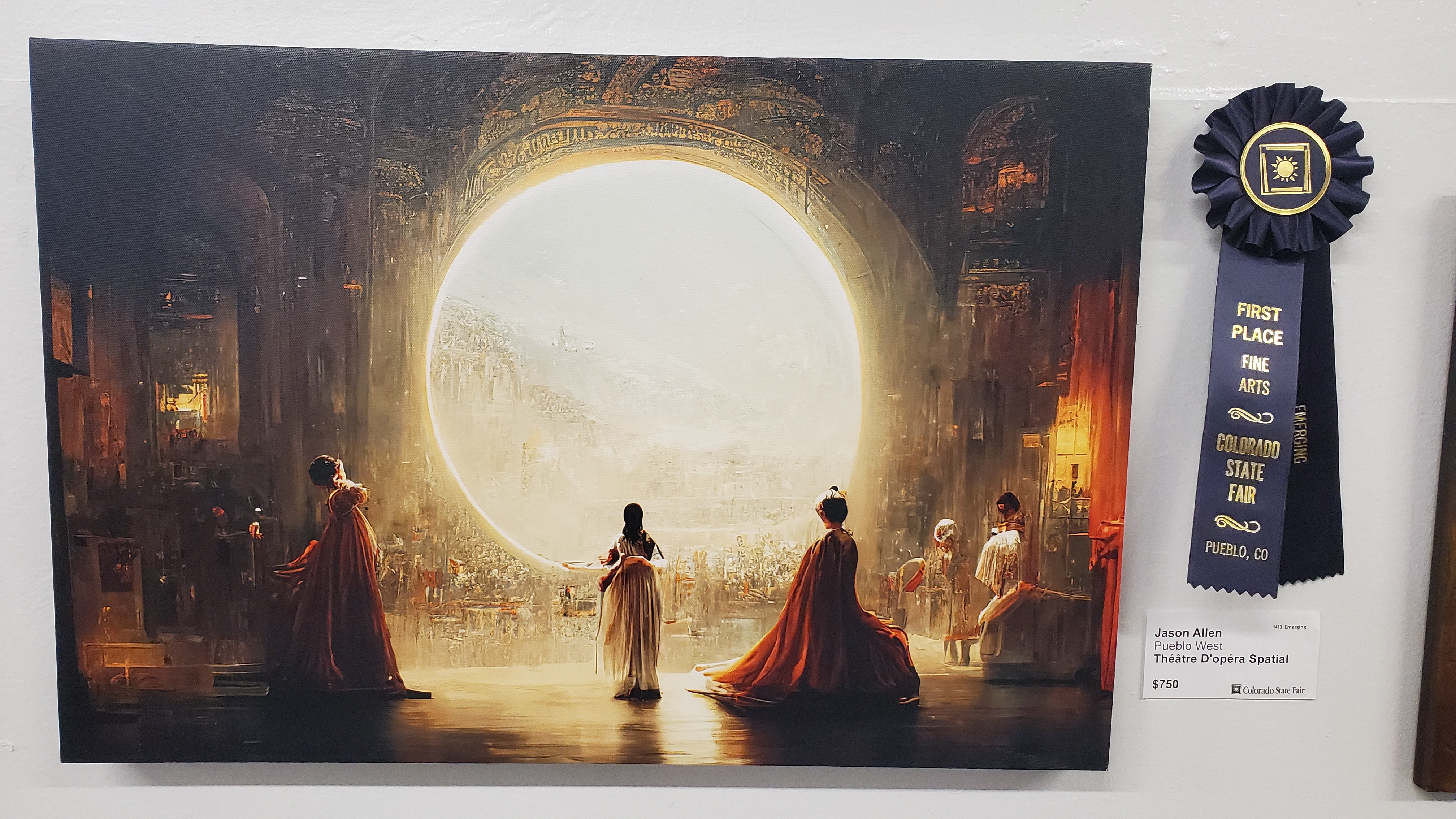AI artist who won competition says art world is 'in denial' about the tech
"This technology exists, and it's creating pieces that prove it can do this now."

Jason Allen recently lit a fire under the art world. The Colorado-based artist used AI software to create art, submitted it to the State Fair fine arts competition, and took first prize. The event attracted widespread attention, with Allen's work being covered in outlets like the New York Times and Washington Post, and sparking a debate on social media that, needless to say, veered from the sophisticated to the unhinged.
"Yes, it has been a crazy week with everything that is happening," says Allen, the man in the middle of this intersection of culture and technology. "There has been a lot of love from the community but also a lot of hate, I have been receiving some hate mail."
The hate mail is the internet being the internet, but the more cogent anti-AI art argument is that it automates a large element of the creative process, and thus should not be directly compared to art produced through traditional methods. There is also the wider argument about these AI being trained on work done by humans, though I'm not going to wade into that particular ethical quagmire here.
There are also, however, a lot of assumptions being made about what these A.I. tools can do, and what Allen's creative process was. An important element to his win is that Allen credited the work to Midjourney as well as himself, being upfront about the process, and so this instantly struck me as another in the long line of stunts artists have pulled to get eyeballs on their work. It is a recurring feature in art history that half the battle for any artist is getting noticed, and complaining that Allen used software to help do that feels somewhat like railing against the 'factory' practices of many modern artists like Damien Hirst. Perception isn't everything, but it sometimes can be.
I asked Allen what he felt lay behind the backlash. "Part of the issue I believe is a portion of artists were in denial of the ability for A.I. to reach a power level that could emulate the same level of creative expression that a human could, let alone compete against them," writes the artist. "We have not seen A.I. do this on its own yet, however, I have demonstrated that the technology should be taken seriously by winning the Colorado State Fair fine art competition in the digital arts category. This technology exists, and it's creating pieces that prove it can do this now."

Allen thinks that the capabilities of A.I. image generation software is causing "a sort of existential crisis right now" in the art community, referencing the disruptive technology of OpenAI as well as DALLE-2 and Midjourney (the software he used).
"Denial is the first step in the grieving process, perhaps (and I am deliberately saying PERHAPS) artists should go through the healing process to reach their acceptance of A.I.," writes Allen. "Because it is not going away and is only going to become more powerful. I think the backlash is par for the course for any major advancement in technology as it pertains to art. Such was the case with the camera, threatening portrait artists in the past, where the guy 'didn't have to do anything except press a button.' Of course, we know that is ridiculous now, but it takes time to accept new eras of art advances."
Keep up to date with the most important stories and the best deals, as picked by the PC Gamer team.
The method is of particular interest, because there's definitely a perception that this is an 'easy' way to create art, and you won't have to look far to find people who consider it cheating. I asked Allen if he could say how big the human element was in his work, and estimate how much time it took him to produce it.
"I made over 900 iterations of Space Opera Theatre and put in 80+ hours conservatively," says Allen. "I chose my top three, cleaned them up in photoshop, and upscaled them with Gigapixel A.I. I am a creative writer and an art director and I think my work is obviously reflected in the prompt that I created to make these pieces."
I mentioned both Duchamp and Jackson Pollock to Allen, because it felt to me like the contemporary resistance those artists' techniques faced almost came from the same place as the objections to using A.I. in the creative process. "In the end," says Allen. "Pollock was the one with his art in the museums and those 'more qualified' or 'talented' artists at the time [were not]…"
A spokesperson for the Colorado Department of Agriculture told the New York Times that, as Allen disclosed the use of Midjourney in his submission, it fell within the competition's rules. They added that the judges didn't know what Midjourney was at the time, but Allen's work would have won regardless.
Allen believes awards shows will eventually end up creating an 'AI category', which does seem like a sane solution. Equally, he's ready to face up to those who criticise his work.
"The ethics isn’t in the technology," Allen told the New York Times following his win. "It’s in the people. This isn’t going to stop. Art is dead, dude. It’s over. AI won. Humans lost.”

Rich is a games journalist with 15 years' experience, beginning his career on Edge magazine before working for a wide range of outlets, including Ars Technica, Eurogamer, GamesRadar+, Gamespot, the Guardian, IGN, the New Statesman, Polygon, and Vice. He was the editor of Kotaku UK, the UK arm of Kotaku, for three years before joining PC Gamer. He is the author of a Brief History of Video Games, a full history of the medium, which the Midwest Book Review described as "[a] must-read for serious minded game historians and curious video game connoisseurs alike."

